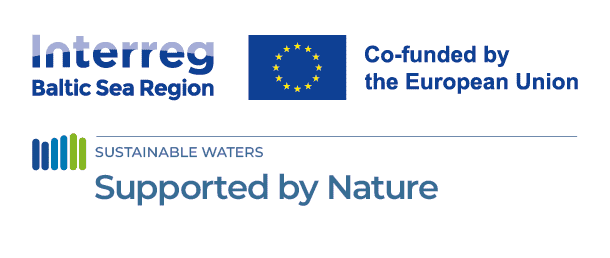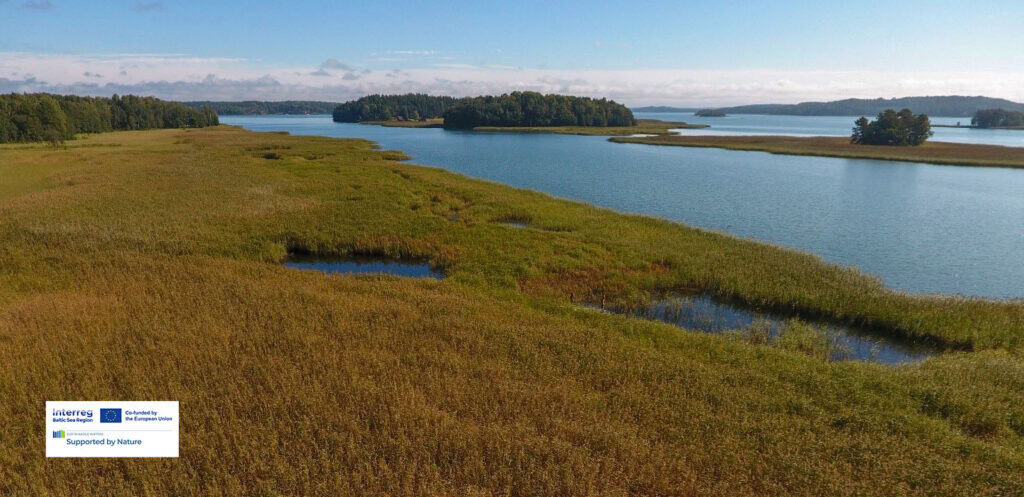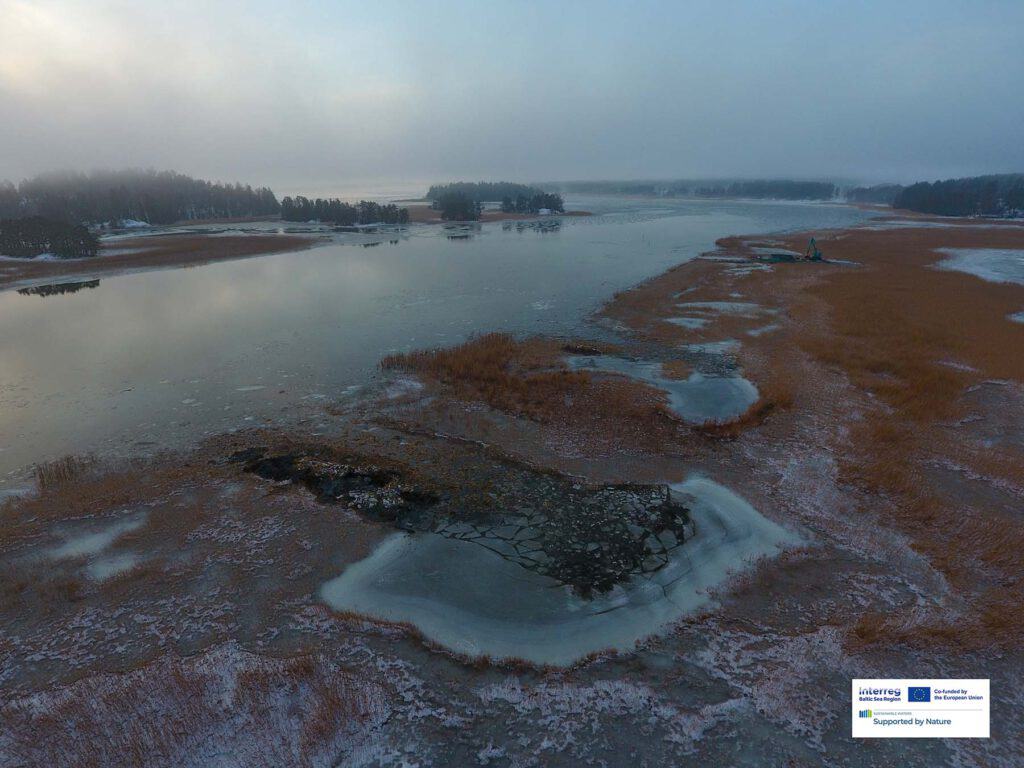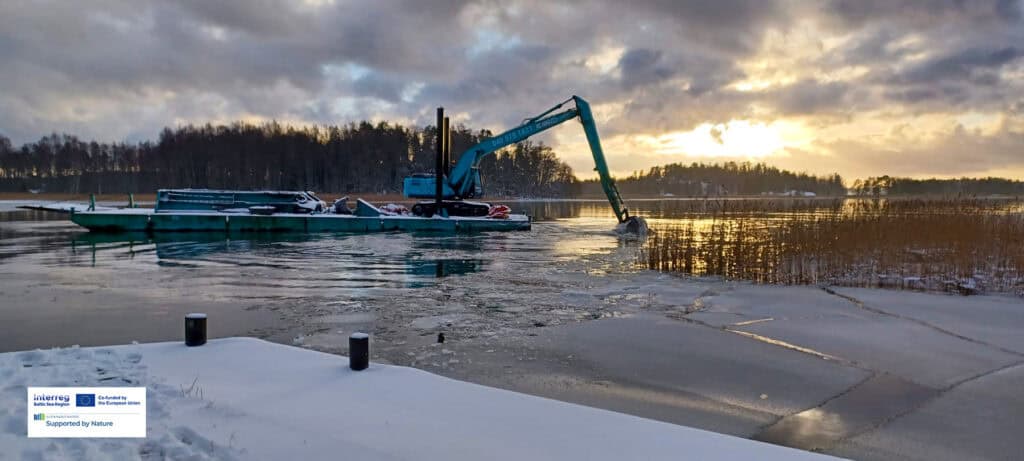
Pike Factory at Sjölax Gård – A Learning Site in the Making
04 February 2025

Image: Reed areas at Sjölax Gård in Pederså, Kimitoön. Photo: Nanni Piiparinen and Heli Kanerva-Lehto, Turku AMK
The aim with the resoration of pike spawning habitat is to support pike reproduction in the Archipelago Sea, while also benefiting local birdlife and aquatic ecosystems. These types of restorations are often referred to as “pike wetlands” or “pike factories.”

Image: The underwater vegetation and algae masses are removed from the water pockets in early January 2025. Photo: Nanni Piiparinen and Heli Kanerva-Lehto, Turku AMK
Site Selection & Planning
The Turku University of Applied Sciences, in collaboration with the Archipelago Sea Area Biosphere Reserve, has mapped potential restoration sites in the Kimitoön and Pargas regions. Local stakeholders and residents were invited to suggest sites through social media, emails, and newsletters. The Sjölax Gård site was identified through the Kimitoön-Finby fisheries area.
The restoration plans have been developed with input from stakeholders, aiming to consider the wishes and perspectives of local residents and stakeholders. Discussions about the measures at Sjölax Gård have taken place with experts, and a discussion opportunity on pike spawning habitat restoration was organized at the Sjölax Gård estate in autumn 2024 for nearby residents and fishers.
Restoration Measures
At Sjölax Gård, the pike spawning restoration will focus on a reed-covered aquatic area near the shoreline. The shoreline features a beautiful pasture-maintained coastal meadow. Between the coastal meadow and the project area lies an old reed zone, where the reeds remain standing during winter.
The project area will enable pike access during the spring spawning season to water pockets surrounded by reeds by creating suitable channels for the fish. Additionally, submerged plant and algae masses accumulated in these water pockets will be removed. The restoration aims to create a natural-like habitat that benefits both pike and local bird species.

Image: A barge excavator is used for the restoration measures. Photo: Nanni Piiparinen and Heli Kanerva-Lehto, Turku AMK
Monitoring
Monitoring of breeding birds and juvenile pike was conducted at the site in spring and early summer 2024. A few juvenile pike were observed. Based on the survey, birds such as great reed warbler (Acrocephalus arundinaceus), sedge warbler (Acrocephalus schoenobaenus) and common reed warbler (Acrocephalus scirpaceus) nest in the old reed area. The area also hosts nesting mute swans (Cygnus olor) and cranes (Grus grus). The restoration measures do not target the old reed zone.

Image: After implementation, the presence of juvenile pike in the area will be monitored in spring 2025 and 2026. Photo: Nanni Piiparinen and Heli Kanerva-Lehto, Turku AMK
Implementation
Restoration measures began in early January 2025. Underwater vegetation and algae masses were removed from the water pockets using an excavator, and the masses were deposited on land. Channels are being opened between the open water and the water pockets. The aim is to complete the implementation in early spring 2025.
This restored pike habitat will serve as a valuable learning site for the project, providing insights into habitat restoration, ecosystem management, and biodiversity conservation.
Text: Noora Haukijärvi, Turku University of Applied Sciences, and Aija Mäkinen, Archipelago Sea Area Biosphere Reserve
The text has been translated with the help of AI and reviewed by our team.





